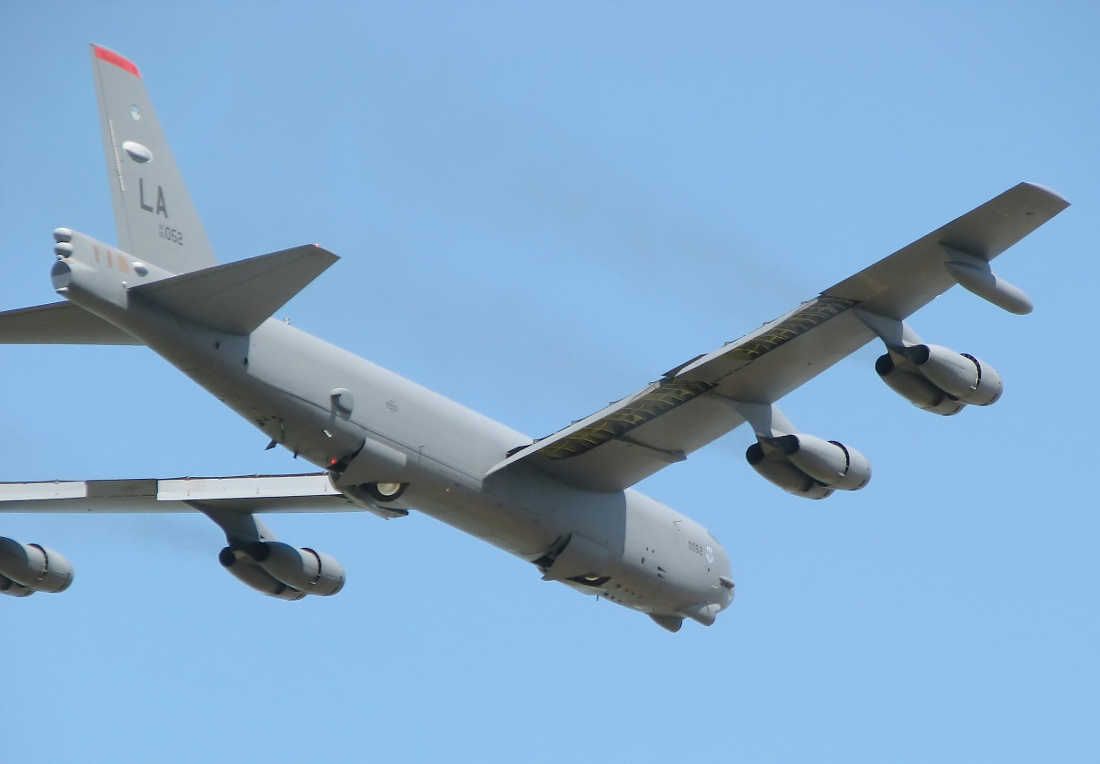By: Randy Tucker
I grew up with sonic booms. They were a familiar sound at the bases my dad was stationed at in Lake Charles, Louisiana, Ramey, Puerto Rico, Blytheville, Arkansas, and the final two bases, Travis and Mather in California.
Many older Americans remember when sonic booms were just part of everyday life. Military jets paid little attention to the civilians living under the flight path back in the 1950s and 60s. A ban on supersonic flight over the continental United States ended those dish rattling booms in the 1970s, except on rare occasions.
You don’t have to fly beyond the speed of sound to annoy the people and animals on the ground.
Soon after my wife Sue and I were married in 1982, I took her on a couple of construction jobs I had in rural Niobrara County, Wyoming.
One afternoon, I was finishing reconstructing an overhang on an old barn south of Lusk, near an area named the Rawhide Buttes.
The Rawhide Buttes rose impressively from a surrounding flat plain. I didn’t realize it then, but photographs from Iraq, Afghanistan, and Iran look very similar to the terrain offered near the Goshen County line with Niobrara County where the line of buttes ran.
Sue ran the hydraulic controls on the bucket of the front end loader on an old farm tractor. I’d placed an extension ladder in the bucket, then climbed up about a dozen feet to reach the roof after the loader was extended all the way up. I know, it wasn’t a great moment in workplace safety. An OSHA inspector’s head would have exploded if he had witnessed it, but it was the only way to reach the top of the barn.
I saw it long before we heard it. From the west, an F-16 was flying straight at us. I knew it was subsonic since there was no boom, but that didn’t mean it wasn’t moving fast.
I yelled down to Sue to grab the tarp we had on the ground we’d laid out before I started to paint the new overhang.
Niobrara County is the least populated county in the least populated state in America. It has a lot of vast, open space, making it the perfect location for low-level flight tests. B-52s were common from nearby Ellsworth Air Force Base in Rapid City, but F16s were a new bird, only recently brought into the air force arsenal at the time. This one must have been from Hill AFB in Utah, but I never found out.
Flying at an estimated 600 miles an hour, just a few hundred feet off the ground I watched it dip down over the Rawhide Buttes, heading straight at us. In less than a minute, it covered the five miles or so to the buttes and passed about 100 yards south of us. It was eerily calm for a few seconds before the jet wash sent tumbleweeds, empty cans, and those painting tarps flying in its wake. All in a day’s work back in the Niobrara County countryside.
What wasn’t in a day’s work were the low-level B52 flights beginning with daily regularity from Ellsworth. Sometimes we spotted a half-dozen of the big birds I’d grown up with, heavy bombers that my dad had worked on as a crew chief.
They changed their flight path early in 1982 a few miles further north from the buttes over a little community called Keeline.
I’d gone antelope and turkey hunting on Jay and Vicki Smith’s place a few miles south of Keeline the fall before.
Vicki had laying hens and a couple of milk cows. For those who don’t know livestock, hens and milk cows can be fickle creatures. Especially fickle when a massive B52 flies directly over the farm, sending the hens scattering and the cows trying to climb over the corral fence.
The hens slowed, and then stopped laying. Milking the cows became nearly impossible.
Vicki called Ellsworth to speak with someone about the flight pattern change. She got the runaround with a few smart aleck lieutenants, but no satisfaction. She tried to get through to the base commander, but she wasn’t allowed.
In frustration, she called Washington, D.C., and asked to speak with President Ronald Reagan’s Secretary of Defense Caspar Weinberger.
The runaround took on professional tones with the White House staff, but she wouldn’t hang up. In a long-distance phone call that lasted more than two hours, Secretary Weinberger finally picked up the phone.
He asked what she needed from him, and Vicki explained her hens not laying, and cows reluctant to milk. The secretary patiently listened then asked her what he could do.
She told him to move the bombers 10 miles north or back to where they had been before, 10 miles to the south.
Weinberger told her he would see what he could do and the call ended.
The next day, the B52s were off on low-level training again, but 10 miles north of the highway this time. A week later, a check from the department of defense arrived at the Smith place, fully reimbursing Vicki for the long-distance phone call.
It was a shining example of an average citizen getting through the red tape of the military bureaucracy, and I’m sure it made Secretary Weinberger’s day. I’m not so sure the junior officers who gave her the runaround at Ellsworth felt the same way after the base commander got the message from Washington.
Randy Tucker is a retired history teacher and freelance writer from western Wyoming. He has a lifetime of experience in farming, ranching, hunting and fishing in the shadow of the Wind River Mountains. Contact him at [email protected].

